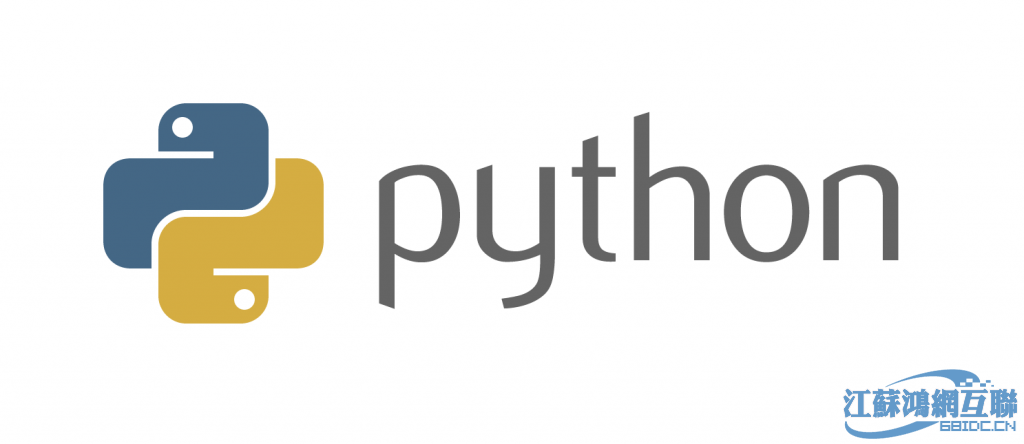Some summary of network traffic
1. nethogs1) NetHogs is an open source, free, network traffic monitoring tool under the terminal. It can monitor the network traffic of Linux processes or applications. NetHogs can only monitor the network bandwidth usage of the process in real time. NetHogs supports IPv4 and IPv6 protocols, local network cards and PPP links 2) Install apt-get install nethogscentos under debian and install yum install nethogs 3) Use the command nethogs to view traffic data in real time and view the function nodes corresponding to each process to monitor network traffic data Amount consumed 4) NetHogs provides interactive control instructions: m: Cycle between display modes (kb/s, kb, b, mb) Switch network speed display unit r: Sort by received. Sort by received traffic s: Sort by sent. Sort by sending trafficq: Quit and&am
1. How to use the monitoring tool? Summary of usage examples of monitoring tools

## Introduction: NetHogs is an open source, free, terminal-based network Traffic monitoring tool, which can monitor the network traffic of Linux processes or applications. NetHogs can only monitor the network bandwidth usage of the process in real time. NetHogs supports IPv4 and IPv6 protocols, local network cards and PPP links. 2) Install apt-get install nethogscentos under debian and install yum install nethogs under os. 3) Use the command nethogs to implement...
2 . Graphic tutorials for using several network traffic monitoring tools under Linux

Introduction: 1. nethogs1) NetHogs is an open source, free, network traffic monitoring tool under the terminal. It can monitor the network traffic of Linux processes or applications. NetHogs can only monitor the network bandwidth usage of the process in real time. NetHogs supports IPv4 and IPv6 protocols, local network cards and PPP links 2) Install under debian apt-get install nethogscentos and install yum install nethogs
3. Details introduction to HTML5 mobile applications 12 major features developed

4.
How to view system network traffic information in python

5.
HTML5 Practical Combat and Analysis: Introduction to WebSockets

6.
PHP study notes: php network traffic statistics system_PHP tutorial
Introduction: PHP study notes: PHP network traffic statistics system. PHP study notes: PHP network traffic statistics system Description: The code comes from the book "PHP and MySQL Web Application Development", and some of the codes have been modified. After my test, all of them can be used
Introduction: PHP collection is said to be very costly Server resources, which process consumes the most server resources? Recently, I am studying the PHP collection program. The collection process is to obtain data, then process the data, and finally put it into the database. I feel that excluding duplicate data and putting it into the database consumes the most server resources. What do you think? ? ------Solution--------------------The poster's question is almost certainly not going to have a clear and unique answer. It is related to the specific business content. Network traffic during collection, processing after data collection, writing database,
Introduction: It is said that PHP collection consumes server resources. Which process consumes the most server resources? Recently, I am studying the PHP collection program. The collection process is to obtain data, then process the data, and finally put it into the database. I feel that excluding duplicate data and putting it into the database consumes the most server resources. What do you think? ? ------Solution--------------------The poster's question is almost certainly not going to have a clear and unique answer. It is related to the specific business content. Network traffic during collection, processing after data collection, writing database,
9. PHP study notes: php network traffic statistics system
Introduction: PHP study notes: PHP network traffic statistics system. PHP study notes: PHP network traffic statistics system description: The code comes from the book "PHP and MySQL Web Application Development", and some of the codes have been modified. After my test, all of them can be used
10. Take full advantage of DB2 9.7’s deduplication device support
Introduction: Deduplication can minimize storage requirements and speed backup and recovery , reduce network traffic, thereby significantly improving the database environment. However, until the release of DB2 v9.7 FixPack 3, if you need to optimize a DB2 backup image for a deduplication device, you must set multiple BACKUP DATABASE command options appropriately. Otherwise, the backup destination will be reset
[Related Q&A recommendations]:
objective-c - Is there a solution for iOS App traffic monitoring
How does Android webview load a remote webpage and call the local (asset) js file
c - linux About real-time network monitoring
The above is the detailed content of Some summary of network traffic. For more information, please follow other related articles on the PHP Chinese website!

Hot AI Tools

Undresser.AI Undress
AI-powered app for creating realistic nude photos

AI Clothes Remover
Online AI tool for removing clothes from photos.

Undress AI Tool
Undress images for free

Clothoff.io
AI clothes remover

Video Face Swap
Swap faces in any video effortlessly with our completely free AI face swap tool!

Hot Article

Hot Tools

Notepad++7.3.1
Easy-to-use and free code editor

SublimeText3 Chinese version
Chinese version, very easy to use

Zend Studio 13.0.1
Powerful PHP integrated development environment

Dreamweaver CS6
Visual web development tools

SublimeText3 Mac version
God-level code editing software (SublimeText3)

Hot Topics
 Where to view the logs of Tigervnc on Debian
Apr 13, 2025 am 07:24 AM
Where to view the logs of Tigervnc on Debian
Apr 13, 2025 am 07:24 AM
In Debian systems, the log files of the Tigervnc server are usually stored in the .vnc folder in the user's home directory. If you run Tigervnc as a specific user, the log file name is usually similar to xf:1.log, where xf:1 represents the username. To view these logs, you can use the following command: cat~/.vnc/xf:1.log Or, you can open the log file using a text editor: nano~/.vnc/xf:1.log Please note that accessing and viewing log files may require root permissions, depending on the security settings of the system.
 How debian readdir integrates with other tools
Apr 13, 2025 am 09:42 AM
How debian readdir integrates with other tools
Apr 13, 2025 am 09:42 AM
The readdir function in the Debian system is a system call used to read directory contents and is often used in C programming. This article will explain how to integrate readdir with other tools to enhance its functionality. Method 1: Combining C language program and pipeline First, write a C program to call the readdir function and output the result: #include#include#include#includeintmain(intargc,char*argv[]){DIR*dir;structdirent*entry;if(argc!=2){
 Linux Architecture: Unveiling the 5 Basic Components
Apr 20, 2025 am 12:04 AM
Linux Architecture: Unveiling the 5 Basic Components
Apr 20, 2025 am 12:04 AM
The five basic components of the Linux system are: 1. Kernel, 2. System library, 3. System utilities, 4. Graphical user interface, 5. Applications. The kernel manages hardware resources, the system library provides precompiled functions, system utilities are used for system management, the GUI provides visual interaction, and applications use these components to implement functions.
 How to interpret the output results of Debian Sniffer
Apr 12, 2025 pm 11:00 PM
How to interpret the output results of Debian Sniffer
Apr 12, 2025 pm 11:00 PM
DebianSniffer is a network sniffer tool used to capture and analyze network packet timestamps: displays the time for packet capture, usually in seconds. Source IP address (SourceIP): The network address of the device that sent the packet. Destination IP address (DestinationIP): The network address of the device receiving the data packet. SourcePort: The port number used by the device sending the packet. Destinatio
 How to recycle packages that are no longer used
Apr 13, 2025 am 08:51 AM
How to recycle packages that are no longer used
Apr 13, 2025 am 08:51 AM
This article describes how to clean useless software packages and free up disk space in the Debian system. Step 1: Update the package list Make sure your package list is up to date: sudoaptupdate Step 2: View installed packages Use the following command to view all installed packages: dpkg--get-selections|grep-vdeinstall Step 3: Identify redundant packages Use the aptitude tool to find packages that are no longer needed. aptitude will provide suggestions to help you safely delete packages: sudoaptitudesearch '~pimportant' This command lists the tags
 Key Linux Operations: A Beginner's Guide
Apr 09, 2025 pm 04:09 PM
Key Linux Operations: A Beginner's Guide
Apr 09, 2025 pm 04:09 PM
Linux beginners should master basic operations such as file management, user management and network configuration. 1) File management: Use mkdir, touch, ls, rm, mv, and CP commands. 2) User management: Use useradd, passwd, userdel, and usermod commands. 3) Network configuration: Use ifconfig, echo, and ufw commands. These operations are the basis of Linux system management, and mastering them can effectively manage the system.
 How to monitor Nginx SSL performance on Debian
Apr 12, 2025 pm 10:18 PM
How to monitor Nginx SSL performance on Debian
Apr 12, 2025 pm 10:18 PM
This article describes how to effectively monitor the SSL performance of Nginx servers on Debian systems. We will use NginxExporter to export Nginx status data to Prometheus and then visually display it through Grafana. Step 1: Configuring Nginx First, we need to enable the stub_status module in the Nginx configuration file to obtain the status information of Nginx. Add the following snippet in your Nginx configuration file (usually located in /etc/nginx/nginx.conf or its include file): location/nginx_status{stub_status
 How Debian improves Hadoop data processing speed
Apr 13, 2025 am 11:54 AM
How Debian improves Hadoop data processing speed
Apr 13, 2025 am 11:54 AM
This article discusses how to improve Hadoop data processing efficiency on Debian systems. Optimization strategies cover hardware upgrades, operating system parameter adjustments, Hadoop configuration modifications, and the use of efficient algorithms and tools. 1. Hardware resource strengthening ensures that all nodes have consistent hardware configurations, especially paying attention to CPU, memory and network equipment performance. Choosing high-performance hardware components is essential to improve overall processing speed. 2. Operating system tunes file descriptors and network connections: Modify the /etc/security/limits.conf file to increase the upper limit of file descriptors and network connections allowed to be opened at the same time by the system. JVM parameter adjustment: Adjust in hadoop-env.sh file






